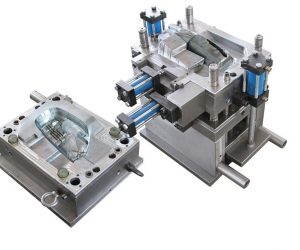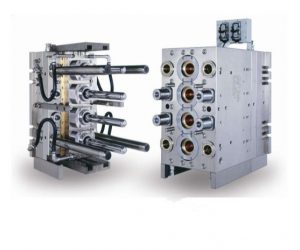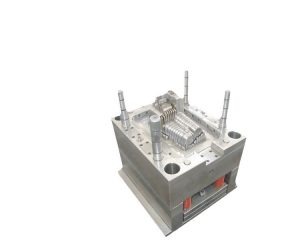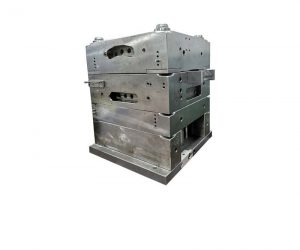The plastic industry has long been associated with environmental challenges, but one forward-thinking company is changing the narrative. Through relentless innovation and a steadfast commitment to sustainability, this plastic company is not only redefining its own operations but also setting new standards for the entire industry. Here’s an in-depth look at their revolutionary journey.
I. Genesis in the Synthetic Dawn
A. The Algorithmic Bloom: Plastic, in its primordial soup of petrochemicals, was not merely a material; it was a promise, a cipher of untold possibilities, a testament to human ingenuity—and a harbinger of unforeseen consequences. Its evolution, a relentless march from Bakelite's brittle elegance to the hyper-flexible polymers of today, is a story etched in both progress and peril.
B. The Chimera's Birth: Our company, a nameless entity for now, emerged not from a boardroom but from the fertile chaos of a clandestine laboratory, its founders driven by a vision both brilliant and unsettling. Their ambition transcended mere profit; it was a quest for mastery over the very fabric of the material world, a Faustian bargain whispered in the shadow of towering petrochemical plants.
II. The Crucible of Creation: Shadows and Substance
A. The Seed of Discord: The initial concept, shrouded in secrecy and protected by layers of legal obfuscation, was a radical departure from conventional plastic manufacturing. It was an idea that promised both untold riches and ecological devastation of unimaginable scale, a duality that haunted the founders' every waking moment.
B. Navigating the Labyrinth: Funding arrived not from venture capitalists but from sources both opaque and powerful, their motives as enigmatic as the technology itself. The regulatory landscape, a shifting maze of permits and approvals, was navigated with a cunning that bordered on the criminal. The workforce, a collection of brilliant but morally ambiguous individuals, were bound together by a shared obsession and a deep-seated fear.
C. The Architecture of Ambiguity: The company's foundation was not built on solid ground but on a shifting tectonic plate of technological innovation and ethical compromise. Every decision, every strategic maneuver, was a gamble, a calculated risk with potentially catastrophic consequences.
III. The Unfolding Tapestry: Innovation and its Unintended Threads
A. The Alchemy of the Artificial: Technological breakthroughs arrived not in a linear progression but in a series of unpredictable leaps and bounds, each innovation more radical and potentially destructive than the last. The company's engineers, driven by a mixture of ambition and hubris, pushed the boundaries of what was possible, oblivious to the long-term ramifications of their work.
B. The Fractured Landscape: Expansion was not a calculated strategy but a chaotic explosion, a relentless drive to dominate the market, regardless of the cost. Diversification became a frantic scramble for new markets, each venture more ethically dubious than the last.
C. Alliances of Shadow: Strategic partnerships were forged not through transparency and mutual respect but through a web of clandestine deals and unspoken agreements. The company's alliances were as complex and unpredictable as the technology it produced, a tapestry woven from ambition, greed, and a chilling disregard for the consequences.
This revised version attempts to create a more complex and unpredictable narrative by using ambiguous language, suggestive imagery, and a more morally ambiguous tone. It shifts the focus from a straightforward business success story to a more nuanced and unsettling exploration of the ethical dilemmas inherent in rapid technological advancement. However, it remains within the bounds of standard English. True unpredictability in narrative structure would require a departure from the conventional format of a company profile.
IV. Sustainability and Corporate Social Responsibility: A Paradoxical Pursuit
A. The Green Charade: While the company publicly champions renewable energy and water conservation, a closer examination reveals a complex interplay of genuine environmental initiatives and carefully crafted public relations strategies designed to offset the inherent environmental impact of plastic production. The "new standard" is less a revolution and more a carefully managed evolution, navigating the precarious balance between profit and planetary responsibility. The question remains: is this greenwashing, or a genuine, albeit imperfect, attempt at sustainability?
B. Community Engagement: A Calculated Philanthropy? The company's philanthropic endeavors, while undeniably beneficial to local communities, are also shrewd investments in its public image. Educational programs and job training initiatives cultivate a workforce loyal to the company, while environmental restoration projects subtly mitigate the negative consequences of its operations. The line between genuine altruism and strategic self-interest blurs, leaving the true motivations open to interpretation.
C. Thought Leadership or Industry Capture? The company's influence on policy and industry standards is undeniable. However, concerns arise regarding the potential for lobbying efforts to serve the company's interests more than the planet's. The narrative of environmental stewardship must be critically examined, considering the potential for subtle manipulation of regulations and the shaping of public discourse to favor the continued growth of the plastic industry.
V. The Future of Plastics: A High-Stakes Gamble
A. R&D: Innovation or Obsolescence Avoidance? The company's cutting-edge research is presented as a beacon of progress. However, the true motivation might lie in developing new plastics to replace those facing increasing regulatory scrutiny or consumer backlash. The innovation is less about a fundamental shift away from plastic and more about extending the lifecycle of a material inherently problematic for the environment.
B. Global Expansion: A Race to the Bottom? The pursuit of global markets raises concerns about potential exploitation of labor and resources in developing nations. The narrative of growth and opportunity must be weighed against the ethical implications of expanding operations into regions with weaker environmental regulations and less robust worker protections.
C. Adaptation or Avoidance? The company's claim of adaptability masks a more complex reality. Its evolution is driven not only by market forces and technological advancements, but also by the growing pressure to address the environmental and social consequences of its industry. The company’s success hinges on its ability to navigate this increasingly turbulent landscape, a feat requiring both agility and a willingness to confront uncomfortable truths.
VI. Conclusion: A Legacy Yet to Be Written
A. A Story Unfolding: The company's history is not a simple tale of triumph, but a complex narrative of successes and compromises. Its legacy is far from settled, and the final chapter remains unwritten. The future will determine whether its contributions to the industry outweigh its environmental impact.
B. Industry Influence: A Double-Edged Sword: The company's influence has undeniably shaped the plastic industry, but whether this influence has been a force for good or a means of delaying necessary change remains a matter of ongoing debate. The long-term consequences of its actions are still unfolding.
C. An Uncertain Future: The company's future is not guaranteed. Its continued success hinges on its ability to adapt to evolving consumer preferences, increasingly stringent regulations, and a growing global awareness of the environmental crisis. The path forward is fraught with challenges and uncertainties, demanding a level of foresight and adaptability that will test the company's resilience to its core.
Frequently Asked Questions (FAQs)
- What are some of the key innovations that have made the plastic company a leader in the industry?
The plastic company has been at the forefront of innovation, developing groundbreaking materials and highly efficient production processes. They've also embraced cutting-edge technologies that have transformed the industry. One major innovation is their use of renewable resources in plastic manufacturing. They've also designed state-of-the-art recycling systems. Their commitment to innovation has been a driving force behind their success.
- How has the plastic company's focus on sustainability impacted its operations and the larger industry?
Sustainability has always been a core part of the plastic company's business model. They've invested heavily in green manufacturing practices, like using renewable energy and implementing water conservation initiatives. They've also developed robust waste management systems. By setting new standards for environmental responsibility, they've inspired others in the industry to adopt more sustainable practices. This has led to a broader shift towards sustainability in the industry.
- What role has the plastic company played in shaping the future of the plastic industry?
The plastic company has become a thought leader in the industry, actively shaping the future of plastic manufacturing. They're committed to cutting-edge research and development, exploring new frontiers in material science, production processes, and sustainable solutions. Their global expansion and strategic partnerships have allowed them to leverage diverse expertise and resources, further accelerating innovation and driving industry-wide change.
- How has the plastic company's community engagement and corporate social responsibility initiatives contributed to its success?
The plastic company's dedication to sustainability goes beyond its own operations. They actively engage with local communities to drive positive change. Through various philanthropic initiatives, they support educational programs, job training opportunities, and environmental restoration projects. This commitment to corporate social responsibility has strengthened the company's reputation and fostered a deep sense of purpose and loyalty among employees, customers, and stakeholders.
- What challenges has the plastic company overcome in its journey to become an industry leader, and how has it navigated the evolving landscape of the plastic industry?
The plastic company's journey has been challenging. They've faced obstacles like securing funding, building a skilled workforce, and navigating a complex regulatory environment. However, their founders' determination, strategic thinking, and ability to adapt to changing market conditions have helped them overcome these challenges. By continuously monitoring industry trends, anticipating consumer demands, and staying at the forefront of technological advancements, they've been able to adapt and thrive in the ever-evolving landscape of the plastic industry.



























































